Top Running & Unerhung Bridge Crane Runways Types & Installation
Overview of top running & underhung bridge crane runways, definitions, structures, types, installation, inspection & maintenance. Check crane runway now.
A crane runway is an essential component of an overhead crane that provides support and stability to the bridge crane structure. It includes the structural elements of the overhead crane, such as the vertical support columns, the bridge girder that supports the rail, and a trolley/hoist assembly. Understanding what a crane runway is, its purpose, how it is constructed, and the safety procedures required for its operation is critical for safe operation. A crane runway serves to support and guide cranes along a fixed path in a facility or industrial setting.
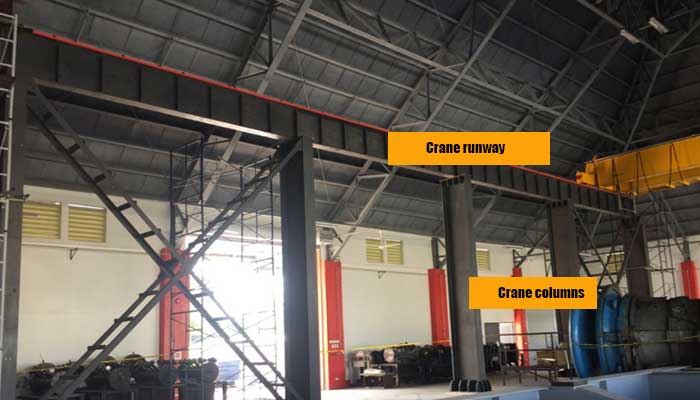
Crane Runway Structures
A crane runway is a structure that supports an overhead crane both vertically and horizontally. It includes vertical support columns for the bridge girder(s) and the rail on which the crane travels. The crane runway also supports the framework of the crane, including the rails and brackets. Crane runways can be constructed from various materials, such as rolled I-beams, welded I-beams, or box girders. They are commonly used in jib cranes, workstation cranes, monorail systems, bridge cranes, and both top-running and under-running cranes.
The specific components of a crane runway can vary depending on the design, but all crane runways begin with the support columns. These columns are typically set in concrete and designed to meet OSHA standards by a professional engineer. In the case of jib cranes, the crane is often set in concrete and does not use columns for support unless an approved building column is available. Semi-free standing runways use the building itself for partial support, so a structural survey is conducted to ensure the building is strong enough.
Crane runway alignment specifications are intricate and must be carefully applied to prevent premature failure of the runway. Even the steel used must be fabricated specifically for this purpose, as standard building steel is not designed for tight tolerances. For example, the Crane Manufacturers Association of America recommends a tolerance of only ¼” for a single bay runway and no more than ⅜” over the entire length of the runway. Wide flange I-beams designed for crane runways are commonly used as the runway beam/girder due to their structural strength and precision milling.
Crane runways are typically constructed using materials that can withstand heavy loads and provide a smooth surface for the crane to move along. Steel is a popular choice due to its strength and durability, and it can be fabricated into various shapes and sizes to fit specific needs.
Types of a Bridge Crane Runway
A crane runway is a key component of an overhead crane, consisting of vertical support columns, lateral support runway beams, and a bridge girder that supports the hoist and trolley. Crane runways can be constructed in various forms, including top running, semi-free standing, and free standing configurations.
- A top running crane runway is a common form of overhead crane used in manufacturing and transportation. It includes a stationary rail mounted to each runway beam, which the end trucks use to transport the bridge and hoist along the crane runway. Top running cranes can be constructed as a single or double girder version.
- A semi-free standing crane runway uses the building structure itself to help support the longitudinal and lateral forces acting on the crane. This type of crane runway does not require as much steel, making it more cost-effective than other designs.
- A free standing crane runway is a versatile type of self-supporting overhead crane that can be located indoors or outdoors. For example, a gantry crane typically rides along a track and employs free-standing legs for support. Free standing and semi-free standing crane runways are commonly used in large production facilities.
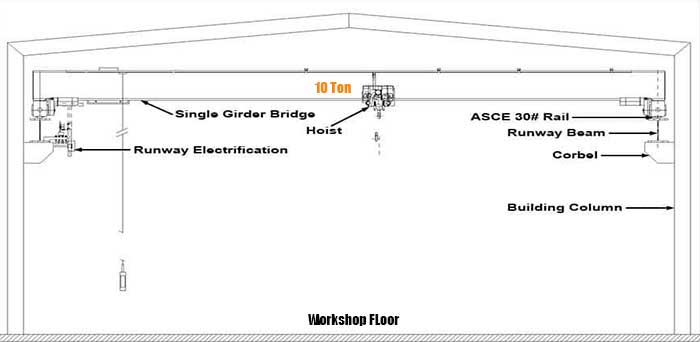 Building column supported overhead bridge crane runway on corbels
Building column supported overhead bridge crane runway on corbels 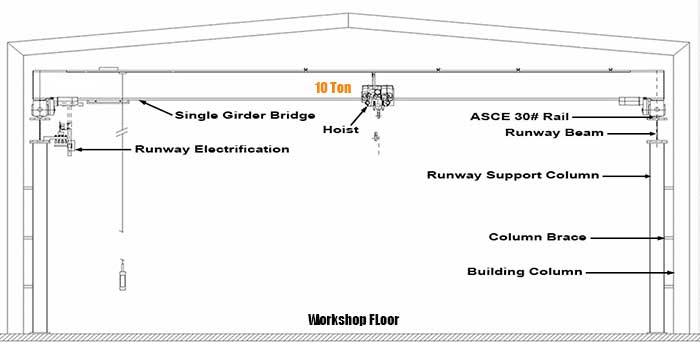 Free standing crane runway on single column braced to building structure column
Free standing crane runway on single column braced to building structure column
Underhung bridge crane runway
An underhung bridge crane runway is similar to a top running crane runway, but it utilizes a rail mounted under the runway instead of on top. This design allows for an increased working range of the crane, making it ideal for spaces with limited headroom. Underhung crane runways are generally more expensive to construct, so they are typically used when a top mounted crane runway is not practical.  Build roof mounted bridge crane runway
Build roof mounted bridge crane runway  Free standing bridge crane runway on columns with header
Free standing bridge crane runway on columns with header
Customized crane runway to fit specific facility needs
A crane runway can be customized to fit specific facility needs. The height and length of the crane runway can be adjusted to meet the requirements of the facility. However, it is important to ensure that the customized crane runway is designed and installed by professionals who have experience in this field. This will ensure that the customized crane runway is safe and efficient to use.
Safety Requirements for Crane Runways
Crane safety is critical for the fall protection it provides. The components of a crane runway are subjected to constant expansion and contraction due to seasonal air temperature changes, which can cause misalignment of the end trucks with the rail and result in unnecessary wear. As such, crane runways must be inspected annually by a certified structural engineer for signs of defects and wear. Routine operation of the runway can also loosen the fasteners on the rail, columns, and end stops, so these are also part of annual maintenance.
Annual maintenance and inspection are required for any crane system that includes a runway, such as top running single girder, top running double girder, underhung, semi-free standing, free standing, cab operated, and jib cranes. Annual inspection is also required for overhead cranes employing components such as runway girders (including box girders), runway columns, runway rails, hoists, bridge girders, end trucks, trolleys, and load blocks (including the hook, swivel, sheaves, pins, and bearings).
Crane loads and crane tolerances must be calculated and respected by the skilled operator operating the crane. The load capacity for any crane will be indicated on the crane itself and represents the maximum load rating for the crane. A load chart is used to determine the maximum load for a crane in a given configuration. Is there anything else you would like to know?
Crane runways installation
Crane runways are typically installed and maintained by professionals who specialize in industrial construction and maintenance. The installation process involves several steps, including designing the runway layout, pouring the foundation, assembling the runway structure, and installing the rails.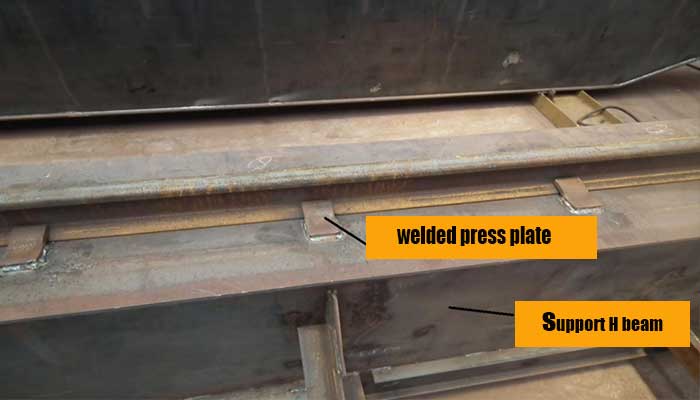
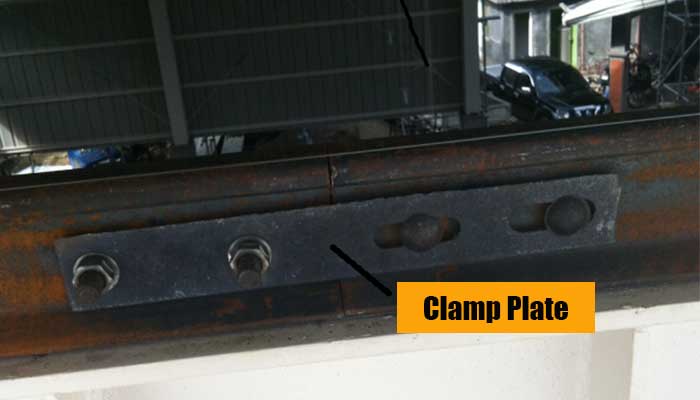
- Crane runway installation is typically carried out by professionals who specialize in industrial construction and maintenance. The installation process involves several steps, including:
- Designing the runway layout: The layout of the crane runway must be carefully planned to ensure that it meets the specific needs of the facility and the crane system.
- Pouring the foundation: A solid foundation is essential for the safe and stable operation of the crane runway. The foundation must be poured to the correct specifications to support the weight of the crane and its loads.
- Assembling the runway structure: The runway structure, including the support columns, runway beams, and bridge girder, must be assembled according to the design specifications.
- Installing the rails: The rails must be installed on top of the runway beams and properly aligned to ensure smooth operation of the crane.
Proper installation and maintenance of crane runways are essential for safe and efficient operation of overhead cranes.
Maintenance of crane runways
To ensure the safe and efficient operation of overhead cranes, it is important to properly maintain crane runways. This includes conducting routine inspections at least once a year. Here are some key steps to follow during a crane runway inspection:
- Inspect the entire length of the runway rail for abnormal or excessive wear to the head and sides.
- Check each component of the rail fastening system for loose hardware.
- Check the condition and fasteners of runway splices and end stops.
- Check the condition of end stop bumpers.
- Check the condition of runway structural beams, columns, shelves or haunches, and any attachment hardware.
In addition to these steps, it is important to have the crane alignment regularly inspected by a reputable third-party to ensure compliance with safety standards.
During maintenance, the crane runway should be inspected regularly to ensure that it is in good condition and functioning properly. This includes checking the rails, bolts, and other components for signs of wear and tear, as well as making any necessary repairs or replacements. It is important to follow the manufacturer's guidelines for maintenance and inspection to ensure the safety and longevity of the crane runway.
Regular cleaning is also important to prevent debris from accumulating on the runway surface, which can cause damage to the crane's wheels or rails. The frequency of cleaning will depend on the environment in which the crane is operating.
Overall, proper installation and maintenance of crane runways are essential to ensure safe and efficient operation of cranes in industrial settings.




